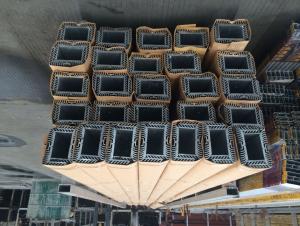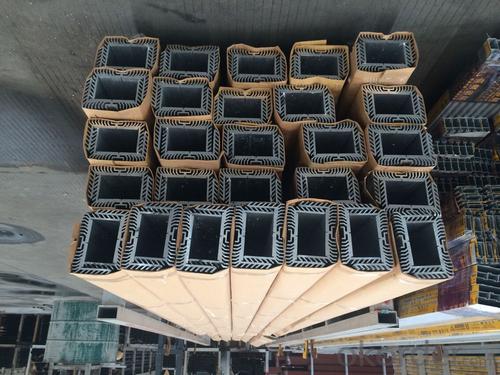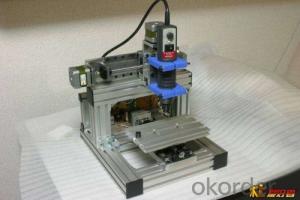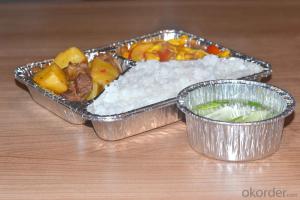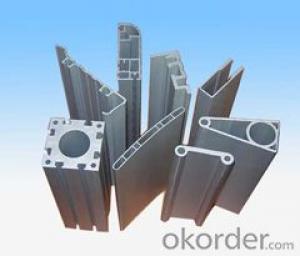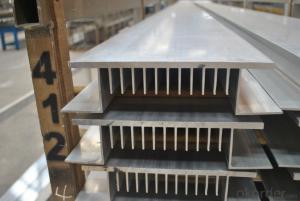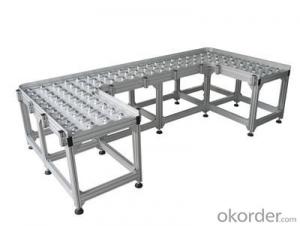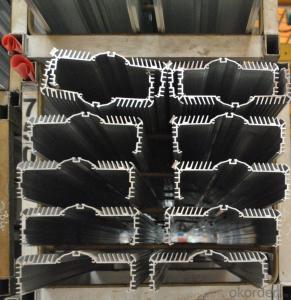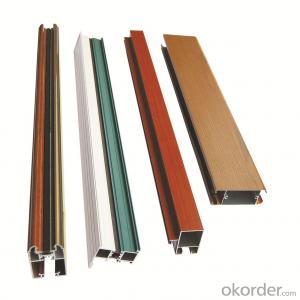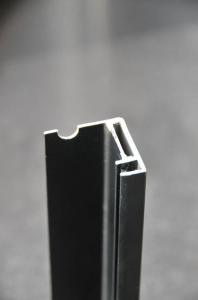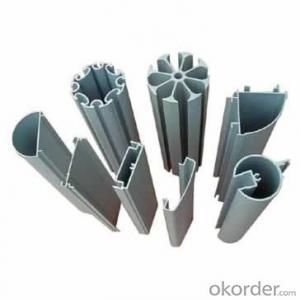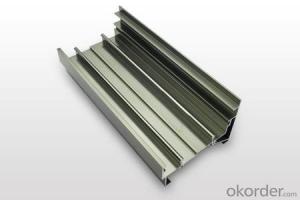Aluminum Extrusion Standard Profiles for Heat Radiators
- Loading Port:
- Shanghai
- Payment Terms:
- TT OR LC
- Min Order Qty:
- 5 m.t.
- Supply Capability:
- 1000 m.t./month
OKorder Service Pledge
OKorder Financial Service
You Might Also Like
Specifications
Aluminum profile.heat sink profile
1.Short lead time: 7-15days.
2.professional technology supports.
3.Factory direct price
aluminum profile,industrial aluminum extrusion, construction aluminum profile
Feature:
Specification: according to your aluminum profile drawing or sample
Alloy Code: 6063-T5.6061-T6 o
Surface treatment:
Mill finish
electrophresis
Anodized(silver anodizing,bronze anodizing,champagne anodizing,etc.),
powder coating (need your confirmation by the panton colour, such as RAL9001 )
Length: no more 6.0 M
Sample time: about 13 days o
Lead time:
about 20 days for 1x40' feet
package:
Shrink film and wrapper, kraft paper ,plastic film or per client's requirement.
price: A00(SMM)+Processing fee
payment :
30% deposit +70% before the delivery or against the copy of B/L
delivery : 15-25 days after the deposit confirmed
- Q: This question asks for an explanation of the various types of aluminum profiles that are specifically used in the construction or design of staircases.
- <p>Aluminum profiles for staircases are diverse and serve different functions. Common types include: 1. Handrail profiles, which provide support and safety. 2. Stringer profiles, forming the backbone of the staircase. 3. Tread profiles, which are the horizontal surfaces on which one steps. 4. Riser profiles, covering the vertical space between steps. 5. Baluster profiles, used as vertical supports between handrails and treads. 6. Connector profiles, for joining different parts of the staircase. Each type is designed to withstand specific loads and is chosen based on the staircase's design, weight capacity, and aesthetic requirements.</p>
- Q: How do you ensure proper weatherproofing with aluminum profiles?
- To ensure proper weatherproofing with aluminum profiles, there are several key measures that can be taken. Firstly, it is important to select high-quality aluminum profiles that are specifically designed for weather resistance. These profiles should be treated with a suitable finish or coating that provides protection against corrosion and weather elements. Next, proper installation techniques should be followed to ensure a tight and secure fit. This includes ensuring that the profiles are correctly aligned and joined together using appropriate fasteners or adhesives. Any gaps or openings between the profiles should be sealed with weatherproofing materials such as silicone or rubber gaskets to prevent water or air infiltration. In addition, it is crucial to pay attention to the design and construction of the aluminum profiles. This involves incorporating features like sloped surfaces, drip edges, and drainage systems to facilitate water runoff and prevent pooling or accumulation. Adequate provisions should also be made to address thermal expansion and contraction, which can affect the weatherproofing performance of the profiles. Regular maintenance is another important aspect in ensuring long-lasting weatherproofing. Periodic inspections should be conducted to identify any signs of wear, damage, or deterioration in the profiles or their weatherproofing elements. Any issues should be promptly addressed through repairs or replacement to maintain the integrity of the weatherproofing system. Overall, by selecting quality aluminum profiles, following proper installation techniques, incorporating suitable design features, and conducting regular maintenance, one can ensure proper weatherproofing with aluminum profiles and enhance their durability and performance against weather elements.
- Q: What are the strategies to reduce the environmental footprint when utilizing aluminum profiles in construction projects?
- <p>To minimize the environmental impact of using aluminum profiles in construction, consider the following strategies: Use recycled aluminum whenever possible, as it requires significantly less energy to produce than new aluminum. Opt for energy-efficient manufacturing processes and choose suppliers with strong environmental credentials. Design for disassembly and recycling to facilitate the reuse of aluminum profiles at the end of their life. Implement sustainable construction practices that reduce waste and emissions. Finally, educate stakeholders about the importance of sustainable materials and encourage the adoption of eco-friendly practices throughout the construction process.</p>
- Q: This question asks for an explanation of the various methods employed in the manufacturing of aluminum profiles.
- <p>Aluminum profiles are produced using several manufacturing processes, each suited to different applications and profile shapes. The primary methods include: Casting, where molten aluminum is poured into molds to form profiles; Extrusion, the most common process, where aluminum is pushed through a die to create long, continuous shapes; Rolling, used for creating flat or curved sheets and plates; Forging, which involves shaping aluminum by applying compressive forces; and Machining, where aluminum profiles are cut and shaped using tools. Each process has its advantages and is chosen based on the desired profile's complexity, strength, and cost-effectiveness.</p>
- Q: Where is the aluminum profile market in Tianjin?
- Industrial aluminium profile standard profile:1530156015901640, 2020204020803030, 30R arc, 3030W 3030, 3030R, 3030RQ, 3060309030150, 4040A, 4040Q, 4040L4040W, 4040Z, 40R arc, 40 right angle, 4060Q, 4060L, 4060Z, 4080, 4080L, 4080W, 8080, 8080W, 606080120100100, 1201204012045454545L 4545Q 4545W 45909090 9090W 45R 4560 4560W 501005050501006060 6060L arc 4545RQ (1530-120120 Series) line industrial profiles and accessories can be assembled into processing products: tool rack (car), operation table, special tool cart, line table, product display, LCD panel, sun room, display cabinets, display rack, mechanical seal cover, shelves, product testing equipment, non-standard equipment, industrial fence, plotter, testing equipment, laboratory equipment, biological machine, labeling machine, production line, motor rotor bracket, electronic products production line, production line, line table, equipment protection barrier, LCD panel production equipment
- Q: Are aluminum profiles capable of being tailored to fit the unique specifications of a construction project?
- <p>Yes, aluminum profiles can be customized to meet specific requirements of a building project. They offer versatility and flexibility, allowing for adjustments in size, shape, and design. Manufacturers can produce aluminum profiles with varying thicknesses, lengths, and finishes to suit the project's structural and aesthetic needs. Customization may include specific bends, cuts, or holes to ensure compatibility with other building components. This adaptability makes aluminum profiles a popular choice for various construction applications, from window frames to structural supports.</p>
- Q: Are there any specific safety precautions when working with aluminum profiles?
- Working with aluminum profiles requires specific safety precautions that should be considered. Here are some important precautions to keep in mind: 1. Personal Protective Equipment (PPE): It is vital to wear appropriate PPE, such as safety glasses, gloves, and protective clothing, to safeguard against potential injuries. Aluminum chips or shavings can cause cuts or abrasions. 2. Ventilation: Ensure that the working area has proper ventilation to prevent the accumulation of aluminum dust or fumes. Aluminum dust can be combustible, and inhaling aluminum fumes can result in respiratory problems. 3. Fire Safety: Due to its high flammability, it is crucial to have fire prevention measures in place. Keep a fire extinguisher nearby and avoid sparks or open flames near aluminum profiles. Choose non-sparking tools and be cautious of excessive heat during cutting or welding processes. 4. Handling and Storage: Aluminum profiles can be heavy, so it is important to use correct lifting techniques to avoid back or muscle injuries. Store aluminum profiles securely and in an organized manner to minimize the risk of tripping or falling. 5. Cutting and Machining: When cutting or machining aluminum profiles, use appropriate tools and techniques. Ensure that the material is securely clamped before any cutting operation to prevent movement and potential accidents. 6. Ergonomics: Prioritize maintaining good ergonomics while working with aluminum profiles to reduce the risk of repetitive strain injuries or musculoskeletal disorders. Utilize ergonomic tools or equipment to minimize strain on the body. 7. Training and Knowledge: It is essential to undergo proper training and acquire knowledge about working with aluminum profiles. Understand the specific properties of aluminum and the associated hazards to work safely and efficiently. By adhering to these safety precautions, the risk of accidents, injuries, or health hazards when working with aluminum profiles can be significantly reduced.
- Q: What are the differences between standard and non - standard shapes?
- Hello, not within the scope of the national standard, so it is called non-standard,The standard piece is within the national standardThat's the difference,This GB standard can be found, are unified
- Q: What does aluminum T1.5 mean?
- Aluminum should be referred to the thickness of 1.5MM thick.
- Q: Can aluminum profiles be used for creating display systems?
- Yes, aluminum profiles can be used for creating display systems. Aluminum is a versatile and lightweight material that is widely used in various industries, including the display and signage industry. Aluminum profiles offer several advantages for creating display systems. Firstly, aluminum is highly durable and corrosion-resistant, making it suitable for both indoor and outdoor display applications. It can withstand various environmental conditions, ensuring the longevity of the display system. Secondly, aluminum profiles are easily customizable. They can be extruded into various shapes and sizes, allowing for flexibility in design. This makes it possible to create unique and eye-catching display systems that meet specific requirements. Additionally, aluminum profiles are easy to assemble and disassemble, which is beneficial for display systems that require frequent changes or transportability. They often come with a simple slot and groove system or other connecting mechanisms, making installation and maintenance hassle-free. Moreover, aluminum profiles can be anodized or powder-coated to provide a decorative or protective finish. This allows for customization in terms of color and texture, enhancing the aesthetics of the display system. Lastly, aluminum profiles provide structural stability while remaining lightweight. This makes them suitable for large-scale displays or installations where weight is a concern. In summary, aluminum profiles are an excellent choice for creating display systems due to their durability, customizability, ease of assembly, and aesthetic appeal.
Send your message to us
Aluminum Extrusion Standard Profiles for Heat Radiators
- Loading Port:
- Shanghai
- Payment Terms:
- TT OR LC
- Min Order Qty:
- 5 m.t.
- Supply Capability:
- 1000 m.t./month
OKorder Service Pledge
OKorder Financial Service
Similar products
Hot products
Hot Searches
Related keywords
